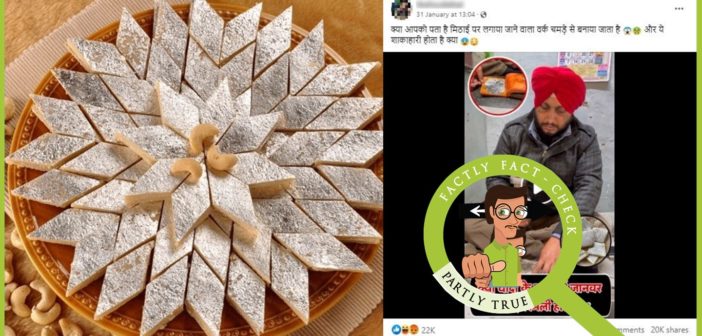A video showing the making of silver foils (chandi varkh/vark), which are usually used to garnish confectioneries is being widely circulated. The video explains how silver foils are produced by placing silver in between the sheets made of animal intestine and therefore requests public to avoid such foils, classifying them as not vegetarian. Through this article, let us try to know insights on the silver foil making process.
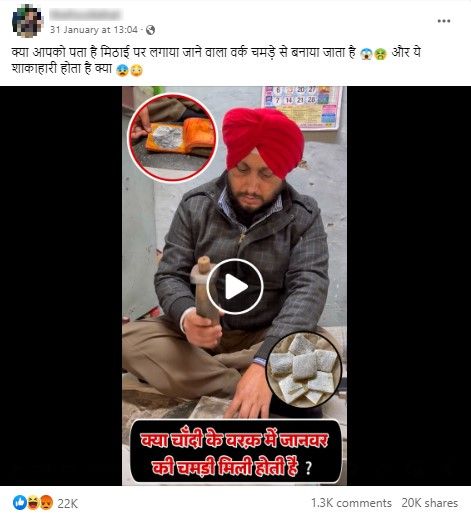
Claim: Silver foil making process still involves animal products.
Fact: It is true that traditional methods of silver foil manufacturing involve animal products. However, after the intervention of food regulatory authorities, courts, and animal rights activists, most of these manufacturers have shifted to modern manufacturing, avoiding animal products. While sporadic events of manufacturers using traditional methods/adulterating have been reported, according to officials, these practices have reduced to a large extent. The viral video could be an old video or related to manufacturer still practicing traditional method. Hence the claim made in the post is PARTLY TRUE.
Silver foils are usually used to garnish sweets, desserts, pan and spices such as cardamom. It is believed that silver has antimicrobial properties and hence prevents the growth of bacteria on food products. Further, increase of shelf life is also a reason behind the use of such foils.
However, in line with the claim made in the viral video, traditional making of silver foils involves animal products. Like mentioned in the video, foils are made by placing the metal in between two layers (made of animal intestine) and pounding till a very thin layer of foil is produced.
The traditional method is banned:
However, taking cognisance of issues pertaining to use of animal products and adulteration using hazardous elements, in 2016, FSSAI (The Food Safety and Standards Authority of India) has banned the use of any animal products in the making of silver foils and issued a notification in this regard.
Through this notification, FSSAI has also fixed the norms for thickness and purity with respect to the silver foil production. Futher, the food regulating body asked the makers to use machines for production of silver foils. As per the notification, the sheet needs to be of uniform thickness, free from creases and folds, have weight of silver foil up to 2.8 gm/sq-m and silver content of minimum 999/1000 fineness.
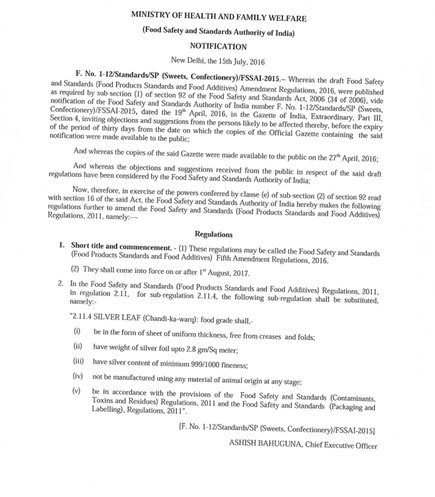
The ban on making silver foils using animal products was stalled for a brief period, when the Delhi High Court in July 2017 stayed the enforcement of the FSSAI order, after some manufacturers went to court citing loss of livelihood for several workers in the business. But later in February 2018, the court lifted the stay and allowed the ban on using animal products in making. And FSSAI has communicated the court’s decision to all the states and UTs and requested them to implement the earlier orders with respect to manufacturing of silver foils.
Sporadic events of unhygienic manufacturing reported:
However, even after the ban on using animal products & hazardous elements in the making of silver foils, some sporadic instances of unhygienic manufacturing of food grade silver leaves have been reported. In view of these complaints, FSSAI in 2018, has ordered all the states and UTs to carry out surveillance and ensure the compliance of earlier orders.
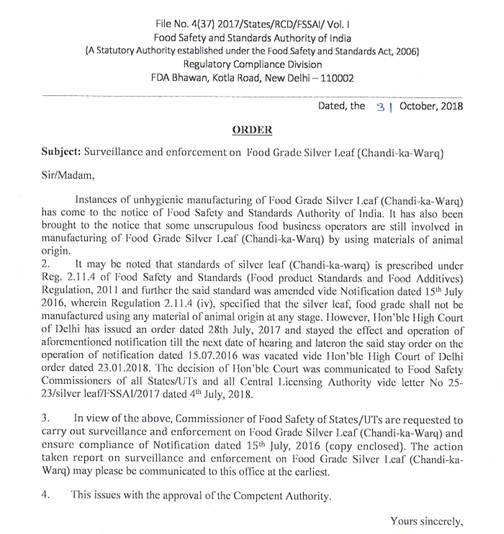
Manufactures have moved to modern technology:
While it is true that some sporadic events of using traditional methods & adulteration using hazardous methods have been reported, following the FSSAI regulation and court’s order, most of the manufacturers have shifted to using machines.

If reports are to be believed, approximately 1.5 lakh Varkh makers are estimated to have lost their livelihood.
A 2014 news article by the New Indian Express reported Mohammed Waliuddin, owner of a varkh production company near Mecca Masjid in Hyderabad, assuring that technology has long replaced the traditional practice of using animal products. ‘With the rise of awareness of safeguarding animals and introduction of modern equipments, intestines of bulls and animal skins were replaced with iron headed hammers and German sheets of butter paper respectively’, he added.
How to identify a good foil:
While there are still a few manufactures producing adulterated silver foils, experts advise some simple techniques to distinguish a good foil from that of an adulterated one. ‘It is very easy to recognise between the pure silver vark and an alloy of aluminium and silver, or even a pure aluminium vark. While the silver vark is very fine and wafer thin, aluminium-mixed varks aren’t as fine. Also, silver varks disintegrate rapidly when rubbed between the fingers whereas aluminium varks tend to roll up into a solid ball’.
Few hacks to identify a pure silver foil over an adulterated one can be read here.
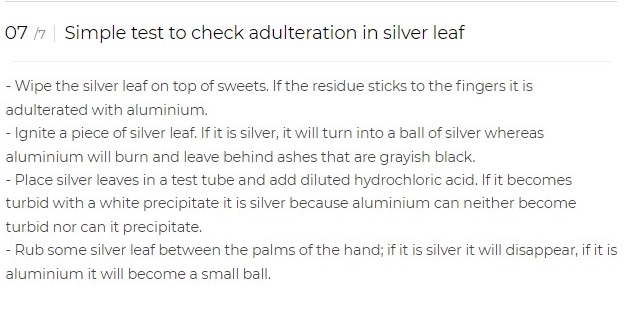
To sum it up, most of the silver foil manufactures shifted to modern technologies.


